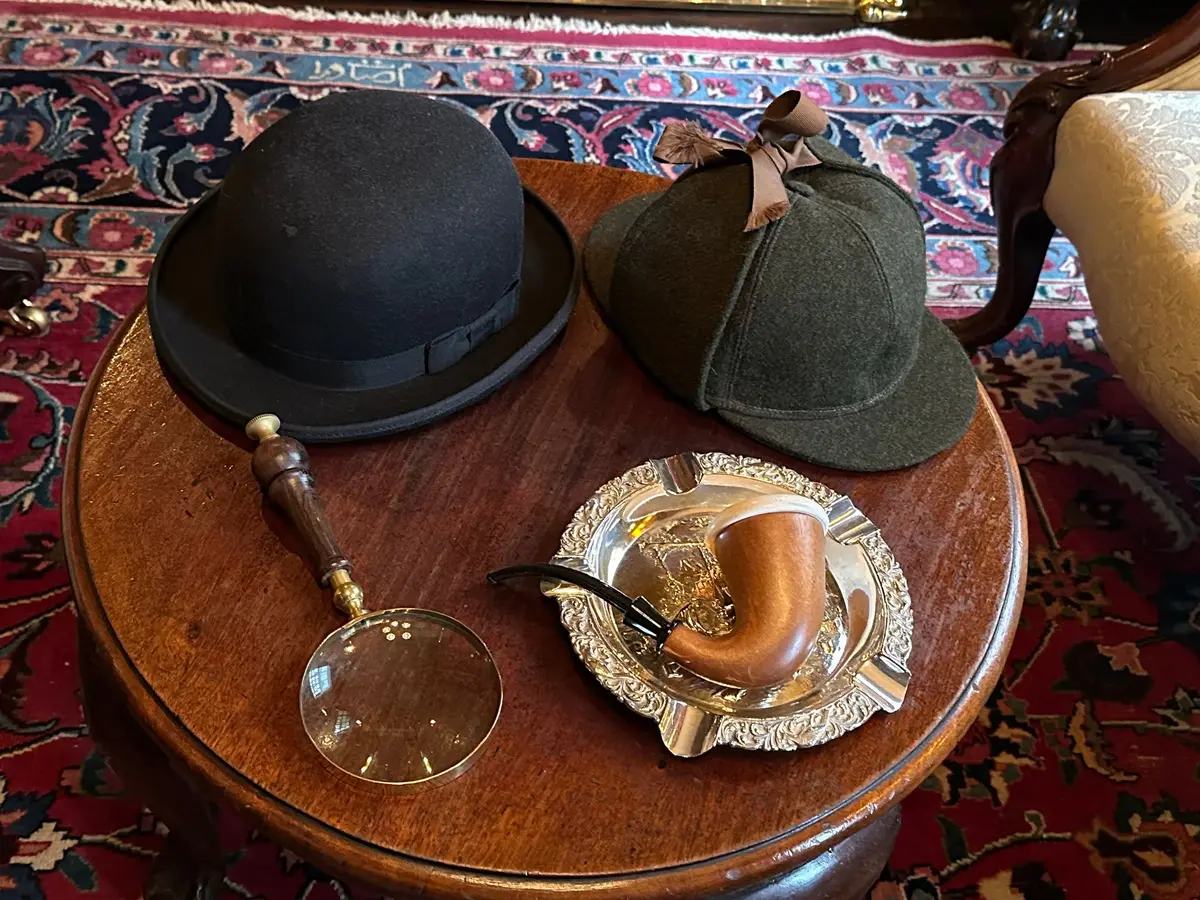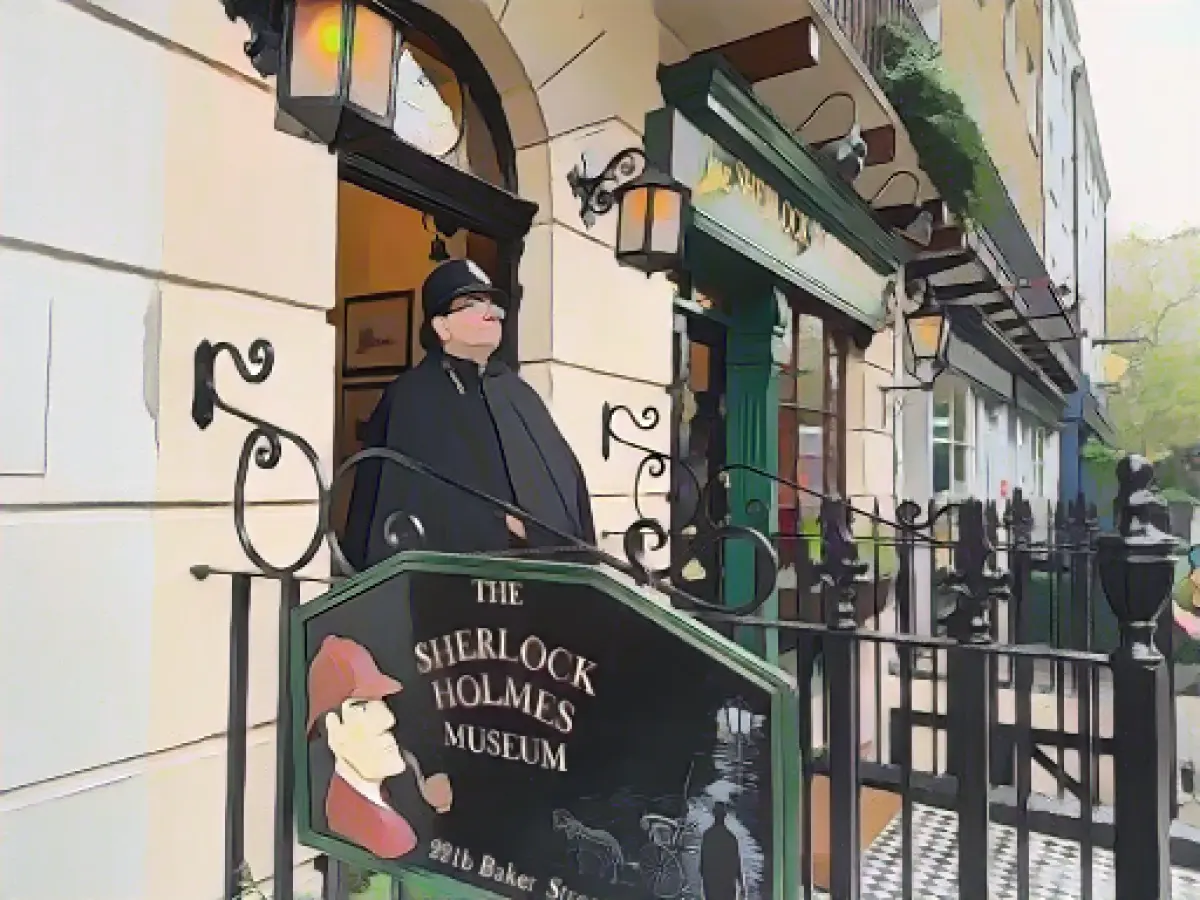Immortal detective - 130 years of Sherlock Holmes
Probably the most famous Englishman who never lived died 130 years ago. In a fierce battle with his adversary Professor Moriarty, Sherlock Holmes fell down a waterfall - and was presumed dead. Arthur Conan Doyle described this in the December 1893 issue of the Strand Magazine, and he should know. After all, Sir Arthur is the creator of Sherlock Holmes. But death is one of those things.
"He's alive, one hundred percent, he's just around the corner and will be back any time," says Laura von Ehrenstein with a grin. Of course, she has to say that because of her job: von Ehrenstein runs the private Sherlock Holmes Museum in London. But the German-British woman is absolutely right on several levels.
Above all, Sherlock Holmes remains immortal 130 years after Doyle wrote about the spectacular duel at the Reichenbach Falls in Switzerland. In four novels and dozens of short stories, the writer depicted the successful investigations of the "Master Detective" over a period of around four decades.
Holmes ultimately survived his supposed death at the Swiss waterfall in "The Final Problem" by more than 30 years. Doyle actually wanted to bury the investigator in a figurative sense. He was simply tired of Holmes and wanted to concentrate on other stories, as von Ehrenstein tells us. But the resistance and outrage were enormous.
Disappointed fans wore mourning corduroys
"Many people wore black after the death, with black armbands, because they were in mourning," reports the museum director. "They thought someone very well-known, very popular had died." The death of the hero of the novel had serious consequences for Strand Magazine: Allegedly 20,000 readers canceled their subscriptions. This brought the magazine to the brink of ruin - and the publishers persuaded Doyle to resurrect Holmes with the help of a lucrative offer.
In 1903, he resumed the series and explained in "The Empty House" how Holmes had survived the fall. In 1901, Doyle had already created what is probably his best-known novel, "The Hound of the Baskervilles".
Ideal image of the systematic investigator
Wearing a checked suit and hat, reclining in an armchair, pipe in hand, talking to his assistant Doctor Watson and conclusively examining all clues and statements - the stories of Sherlock Holmes have created the image of the systematic detective. Doyle was probably the first writer to have his detectives use scientific methods. He inspired crime writers such as Agatha Christie. Even today, the self-contained and astute figure of the detective is reflected in roles such as the TV investigator "Inspector Barnaby".
Holmes film actor Benedict Cumberbatch once called his character a "man of action and a great, great thinker". "He has a razor-sharp wit that can knock people off their pedestals and gain the upper hand in a second." Holmes is even a role model for real officers. "Many police officers visit the museum. Just to say: he's my icon. I grew up with him and I became a police officer because of him," says von Ehrenstein.
The museum director and her team want to reflect the time of the stories as authentically as possible. This goes so far that the address of the museum - thanks to official approval - is the same as the one where Holmes lives in his stories: 221b Baker Street. The Victorian-style house is actually number 239, with a member of staff greeting visitors as "Bobby" outside the door.
Where is Sherlock Holmes' grave?
"Even after visiting, many guests don't even know that Sherlock Holmes didn't exist - or don't want to know," says von Ehrenstein. "Sometimes we are asked: Where can we see Sherlock Holmes' grave?" The city of London certainly encourages this feeling. A corner away from the museum, right at the exit of Baker Street tube station, stands a statue of the detective as if he had been a real person. There are also walks through the British capital in the detective's footsteps.
The BBC television series "Sherlock" in the 2010s in particular ensured that the old novel character was also known to a younger audience and around the world. Some fans believed that the British Holmes actor Cumberbatch was the real detective, says von Ehrenstein. The enduring popularity is enormous: in February, a Holmes rock musical will celebrate its premiere in Newbury, England.
"I compare Sherlock Holmes a bit to Santa Claus," says the museum director in parting. "If you really believe in it and don't want to know any different, then he's just there."

Sherlock Holmes' continued presence in literature is a testament to Arthur Conan Doyle's skills as a creator. Despite Doyle's desire to retire the character, the outcry from disappointed fans led to Holmes' resurrection in new stories.
In the realm of crime literature, Sherlock Holmes has been a significant influence, with authors like Agatha Christie drawing inspiration from his methodical investigations.
Source: www.dpa.com







